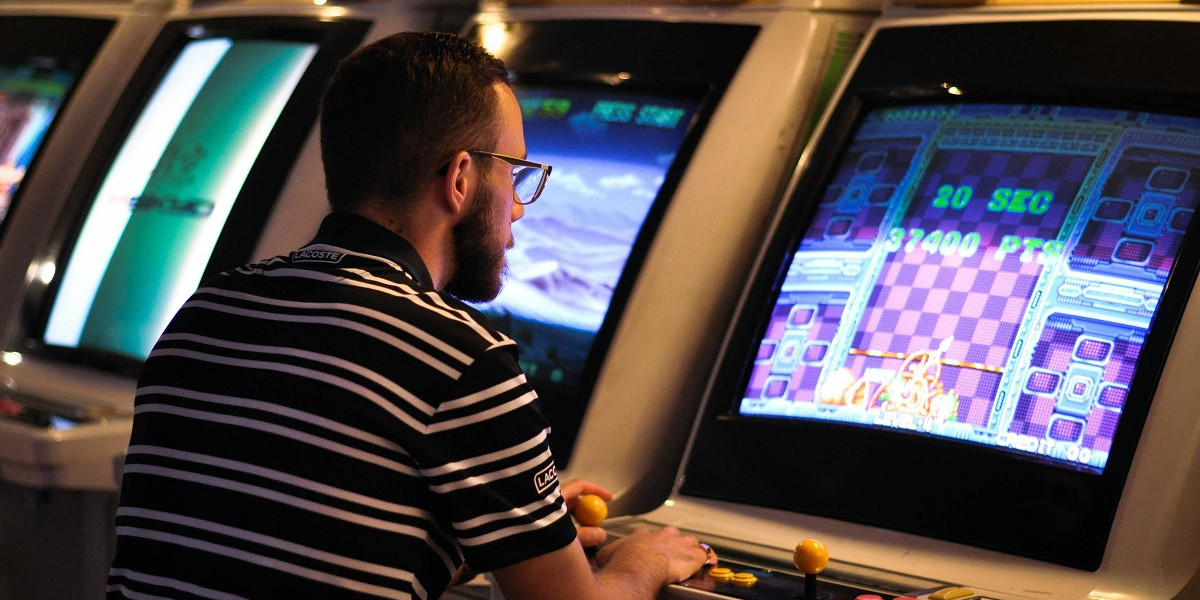Retro gaming is more than just a nostalgic hobby—it’s a journey into the roots of video game technology. For many, playing retro games is a way to relive the past and experience the magic of the 80s and 90s gaming world. But for those who are curious about how gaming technology has evolved, it offers an invaluable opportunity to learn about the pioneering systems and the innovations that laid the groundwork for the modern gaming industry.
In this article, we will explore how playing retro games provides a deeper understanding of classic gaming technology. From the first gaming consoles to the technological innovations that defined early gaming, we’ll examine the history, features, and mechanics of retro games, and how you can use them to gain insight into the industry’s evolution.
1. The Birth of Video Gaming: The First Consoles
The history of video games began in the early 1970s, and as you play retro games, you can trace the roots of the industry back to these early days. The first consoles were simple machines designed to offer basic entertainment, but they were revolutionary at the time. Understanding these early systems can help you appreciate just how far gaming has come.
Pong and the Early Days of Consoles
One of the first commercially successful video games was Pong, created by Atari in 1972. The game was a simple simulation of table tennis, using two paddles and a ball that bounces back and forth. The technology behind Pong was extremely basic—just a few pixels representing paddles and a bouncing ball—but it was a huge step forward in interactive entertainment.
If you play retro games like Pong or other early arcade games, you’ll begin to understand the limitations of these first systems. These games didn’t have advanced graphics or sound. Instead, they relied on simple vector graphics, beeps, and tones to create a fun and engaging experience. Despite the simplicity, these early games laid the foundation for all modern gaming by showing that interactive entertainment could be a hit.
The Rise of Home Consoles
As technology progressed, consoles evolved, with systems like the Atari 2600 in 1977 and the Nintendo Entertainment System (NES) in the mid-1980s changing the landscape of gaming. These consoles introduced new technologies such as color graphics, more advanced audio, and better processing power. As you play retro games from these consoles, you’ll witness firsthand how the technology advanced in leaps and bounds during the early years of home gaming.
For example, Super Mario Bros. on the NES (1985) was a breakthrough in platform gaming, offering innovative gameplay mechanics, colorful graphics, and a memorable soundtrack. Playing retro games from systems like the NES and the Sega Genesis allows you to see how developers pushed the limits of hardware to create more complex and immersive gaming experiences.
2. The Technology Behind Classic Gaming Systems
When you play retro games, you not only experience fun gameplay but also learn about the hardware that powered those games. The technology behind these systems was revolutionary for its time, and understanding these pieces of hardware gives you insight into the progression of video game technology.
CPU and Memory Limitations
Classic gaming consoles were often limited by the processing power of their CPUs. For example, the NES had an 8-bit processor that could handle only basic calculations and operations. While this limited the complexity of the games, it also spurred creativity. Developers had to find ways to make the most out of the system’s capabilities, leading to innovative game design, pixel art graphics, and sound techniques.
As you play retro games, you’ll notice that early games often relied on clever tricks to optimize performance. For example, The Legend of Zelda on the NES used a small memory space but incorporated complex overworld maps and dungeons that felt expansive. Developers had to use efficient coding techniques, compressed graphics, and sound to make games feel as full as possible with limited resources.
Graphics and Sound Technology
The technology used to create graphics and sound for retro games was vastly different from today’s high-definition visuals and surround sound. In the early days, graphics were composed of simple 8-bit and 16-bit pixel art, and sound was often limited to basic beeps and chiptunes. Playing retro games gives you a unique opportunity to experience how artists and developers used limited resources to create iconic designs and memorable soundtracks.
For example, in the early 8-bit era, games like Super Mario Bros. and Donkey Kong used minimal graphics—just a few blocks, simple characters, and basic environments. But these limited visuals were filled with charm, and the soundtracks, though basic, became unforgettable. The Super Mario Bros. theme is still instantly recognizable today.
By playing retro games, you begin to appreciate the creativity that was required to make these simple graphics and sounds appealing. Retro games prove that you don’t need realistic graphics or sophisticated sound design to make a game enjoyable; all you need is great design and innovation within the constraints of the technology available at the time.
Cartridges and Storage Media
One of the most interesting aspects of classic gaming technology is the way games were stored and distributed. The cartridges used in consoles like the NES, Sega Genesis, and Super Nintendo were the main medium for playing games. These cartridges contained the game’s code, graphics, and audio data, all of which were loaded directly into the console’s memory.
As you play retro games, you may reflect on how different it was to use physical media. Back in the 80s and 90s, players had to blow dust out of cartridges to get them to work and deal with the occasional game malfunction. Unlike modern games, which are often downloaded directly to your console or computer, retro games were much more dependent on hardware, and the physical nature of cartridges contributed to the tactile experience of gaming.
3. How Classic Games Paved the Way for Modern Gaming
As you continue to play retro games, you'll start to see how the limitations and innovations of these older systems laid the foundation for the games of today. The technology used in retro games directly influenced modern gaming hardware and software, and many of the ideas that emerged during the 8-bit and 16-bit eras can still be seen in today's games.
2D to 3D Evolution
The transition from 2D games to 3D games is one of the most significant milestones in gaming technology. Early retro games like Super Mario Bros. and Pac-Man used simple 2D environments and gameplay. However, as technology advanced, so did the complexity of the games. The transition from 2D to 3D was made possible by systems like the Sony PlayStation, which introduced the ability to render 3D polygons.
By playing retro games from both the 8-bit and 16-bit eras, you can observe how game design evolved from simple, flat characters and environments to more complex, immersive worlds. The foundation of 3D game design can be traced back to these earlier systems, with developers learning how to manipulate graphics, physics, and interactions before fully realizing 3D environments.
Multiplayer and Online Play
While early retro games were limited to single-player experiences, the groundwork for multiplayer games was laid during this era. Many early games, such as Street Fighter II, featured local multiplayer modes where players could compete against each other. Additionally, systems like the Sega Genesis and Super Nintendo were some of the first to introduce cooperative multiplayer gaming, allowing friends to team up and play together.
Though online multiplayer as we know it today didn’t exist during the retro gaming era, playing retro games helps you appreciate the evolution of gaming’s social aspect. From the couch co-op experiences of the past to today’s global online communities, retro games played a crucial role in making multiplayer gaming a mainstream experience.
4. Learning About Classic Game Design Principles
Playing retro games also gives you a deeper understanding of game design principles. The limitations of early hardware forced developers to be highly creative and resourceful. Games had to rely on tight controls, clear objectives, and rewarding gameplay loops to keep players engaged, as there was little room for fluff or filler.
As you explore these older games, you’ll notice that many of the core mechanics of modern game design—like level progression, power-ups, and difficulty curves—were perfected in the early days of gaming. Developers had to get it right with fewer resources, and as a result, classic games are often celebrated for their tight, refined gameplay.
5. Conclusion: Play Retro Games to Understand Gaming Technology
Playing retro games is more than just a fun trip down memory lane; it’s an opportunity to learn about the technologies, innovations, and game design principles that helped shape the modern gaming industry. From the humble beginnings of early consoles to the graphical innovations and multiplayer advancements of the 16-bit era, retro games provide a glimpse into the technological evolution of the video game world.
By immersing yourself in these classic games, you not only experience the joy and challenge of some of the best games ever made but also gain a deeper understanding of how modern gaming technology came to be. So, the next time you pick up your favorite retro game, take a moment to appreciate the cutting-edge technology of its time and the lasting impact it’s had on gaming as we know it today.










